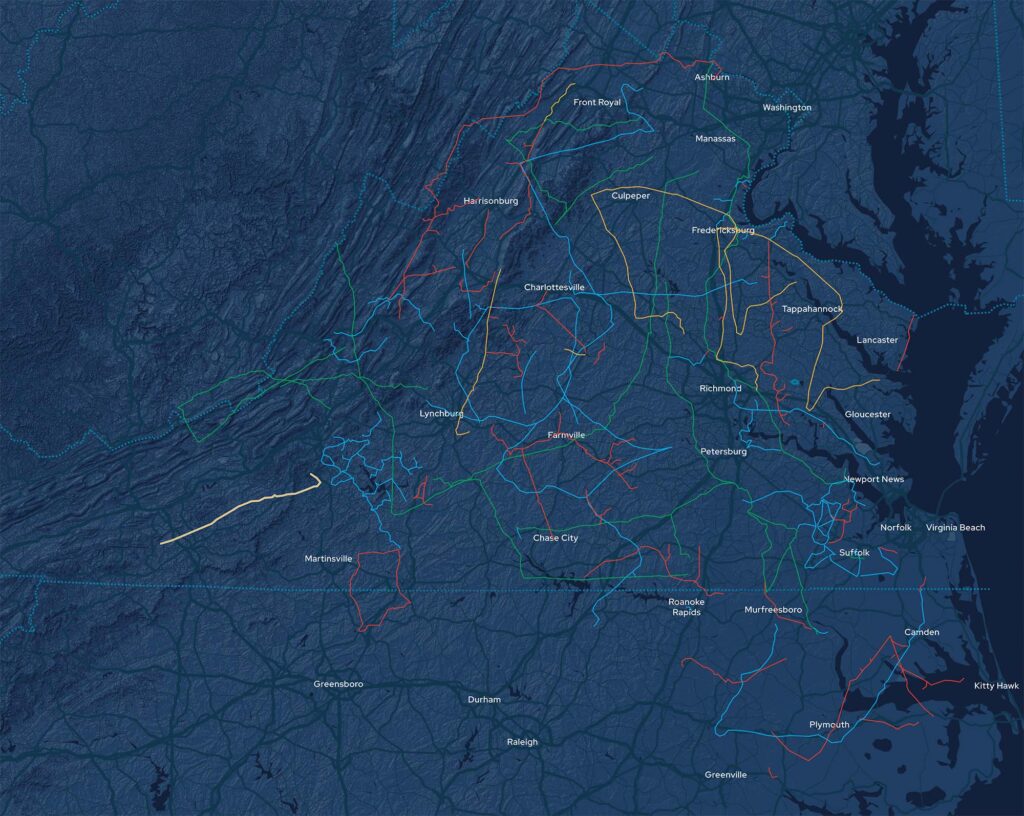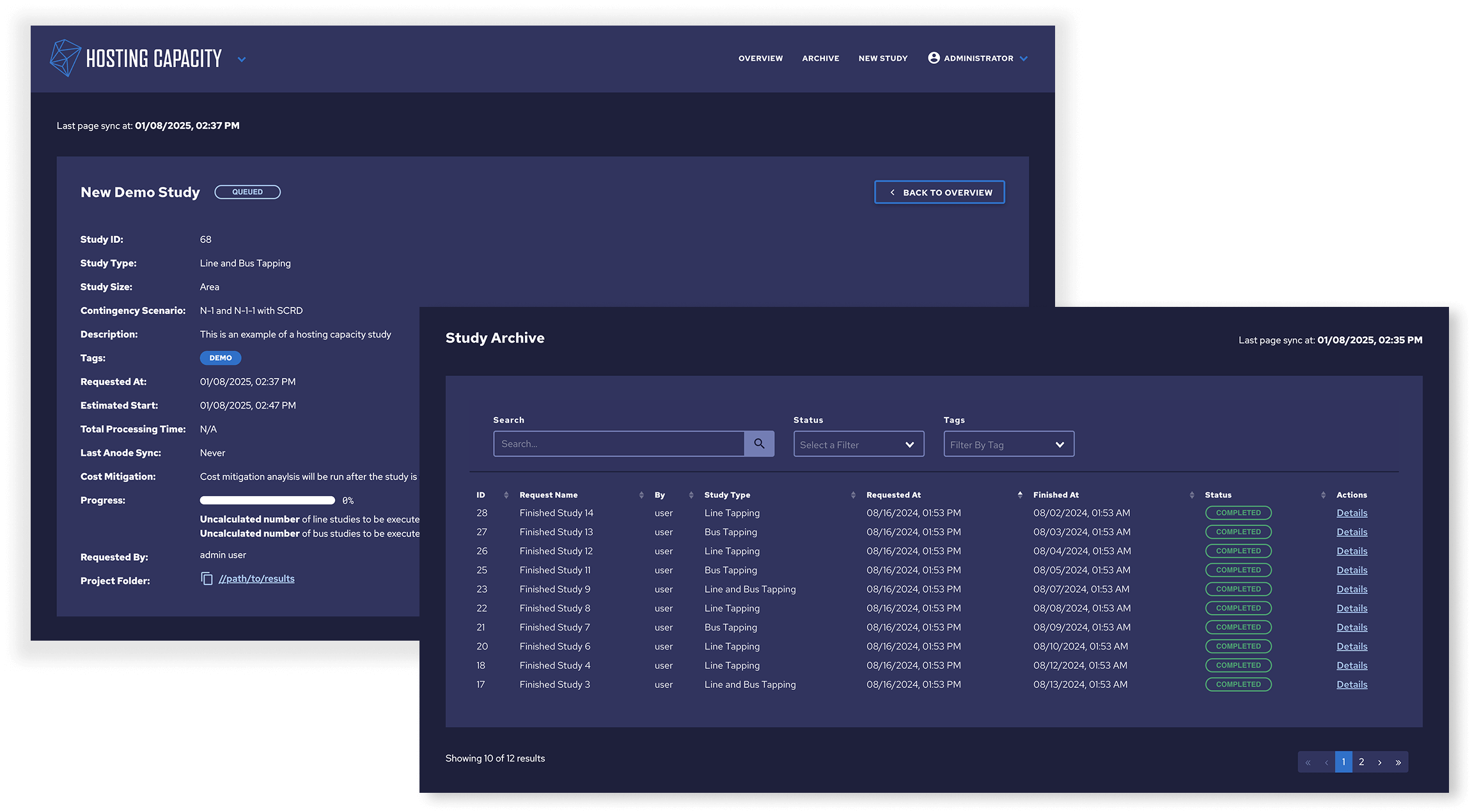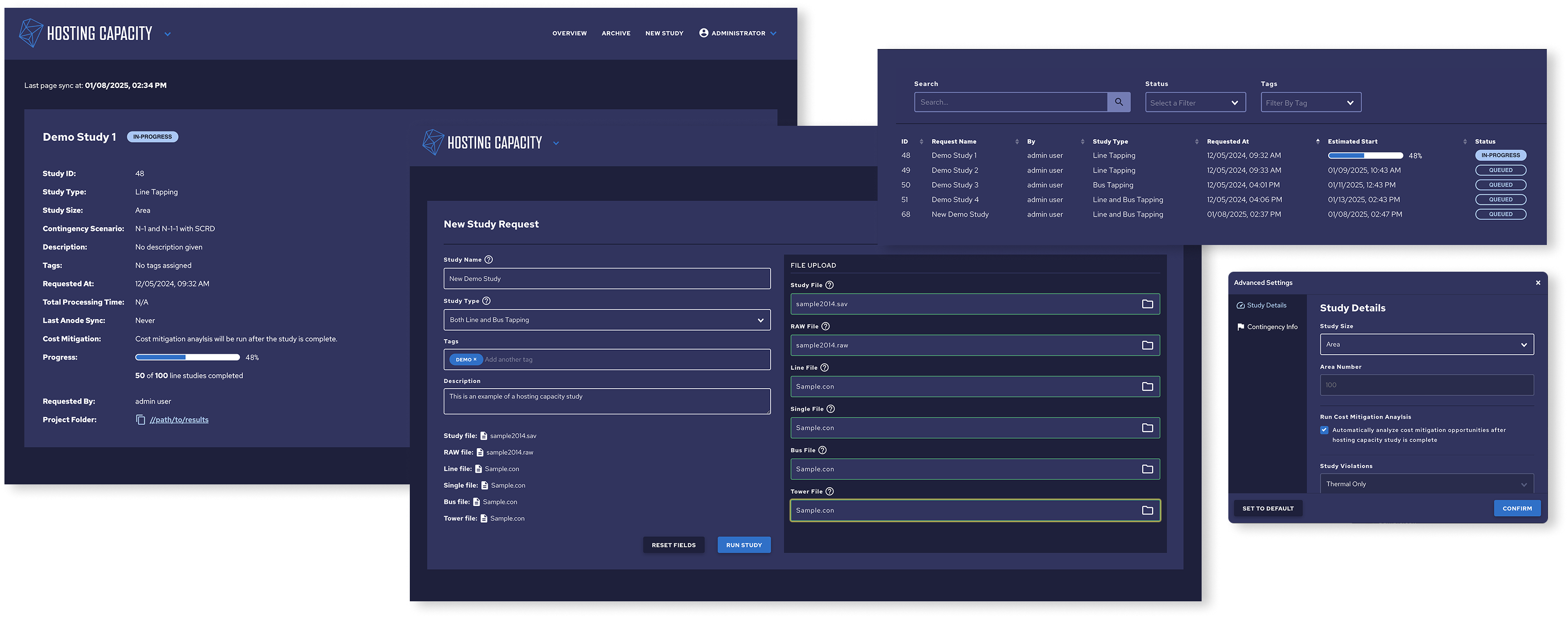Optimizing Grid Expansion: How a Custom Hosting Capacity Tool Streamlined Planning & Saved Weeks of Analysis
A major utility provider, operating in a region experiencing rapid industrial and large loads expansion, faced significant challenges in evaluating transmission grid interconnection capacity. With increasing energy demands from data centers, large industrial loads, and renewable energy projects, the utility recognized the need for an advanced tool to analyze hosting capacity and support infrastructure planning.
The utility sought a solution that could efficiently assess grid capacity at a large scale, optimize decision-making, and support compliance with regulatory mandates for integrating new energy sources.


Prior to this project, evaluating hosting capacity for incremental loads was a labor-intensive process that required weeks of manual data analysis. With the region’s increasing energy demands, particularly from industrial expansions, the existing approach was no longer sustainable.
Key obstacles included:
- Lack of a standardized method for large-scale hosting capacity analysis at the transmission level.
- The need for a computationally intensive tool capable of running large-scale power flow studies efficiently.
- Inability to provide fast, accurate, and accessible data for planning and decision-making.
Additionally, large industrial loads such as battery factories and manufacturing plants require significant energy, necessitating careful grid planning. Green energy developers also need insights into the best locations for solar and wind farms. The HCA tool needed to serve both industrial consumers and renewable energy stakeholders by modeling future grid conditions and capacity constraints.

The Hosting Capacity Analysis Tool
To address these challenges, we partnered with the utility to co-design and develop the Hosting Capacity Analysis (HCA) tool—a modern, scalable software platform that dynamically models and visualizes transmission grid capacity.

Key features of the HCA tool include:
- Automated Power Flow Analysis: Eliminates the need for manual calculations, reducing study time from weeks to hours.
- Scenario-Based Planning: Users can input variables and run multiple studies to analyze transmission bottlenecks and hosting potential.
- Geospatial Visualization: Interactive mapping tools display capacity constraints and available hosting capacity across the grid.
- Regulatory Compliance: Designed to align with industry regulations, ensuring faster and more reliable clean energy integration.
- Cloud-Based Architecture: Provides scalability and seamless access for the utility’s planning teams.
The tool enables large industrial customers to determine the best locations for new facilities by evaluating existing infrastructure and identifying potential bottlenecks. Renewable energy developers can use the tool to find optimal sites for solar and wind farms, ensuring efficient energy distribution across the grid.

Quantifying the Value
Hosting capacity analysis relied on manual spreadsheets and disconnected data sources, resulting in slow decision-making and bottlenecks in interconnection requests.
The HCA tool automates and centralizes the analysis process, reducing study completion times from weeks to hours, eliminating redundant work, and increasing operational efficiency.